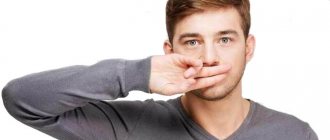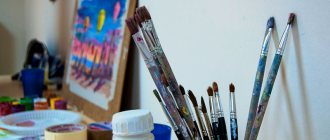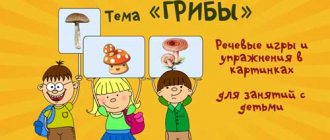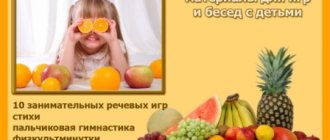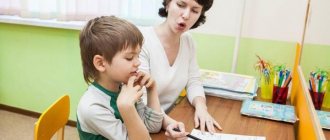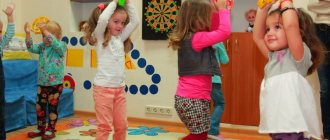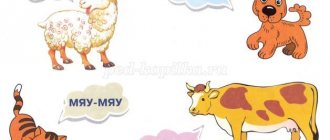Speech therapy rhythms in theory and practice are the focus of each of the publications in this thematic section. Here you can find useful tips and advice for teachers; ready-made notes for logorhythmic classes, theatrical performances, gymnastics and games.
You may find that special methodological developments on the use of logorhythmic exercises in integration with classes of a completely different focus will be useful in your work. Check out the positive experiences of your colleagues in children’s speech development and feel free to take note of them.
We develop speech, voice, memory using proven logorhythmic methods.
Contained in sections:
- The work of a speech therapist. Speech therapy 8173
By groups:
- Senior group
- Preparatory group
- Middle group
- Junior group
Showing publications 1-10 of 1437. All sections | Logorhythmics. Logorhythmic exercises
New
Photo
The best
Consultation for parents “Logorhythmics, its role in the life of a child” Municipal budgetary preschool educational institution kindergarten “Rainbow”
With.
Mamontovo Consultation for parents “ Logorhythmics , its role in the life of a child” Prepared by teacher: Veligurova O.V. Logorhythmics is a system of exercises, tasks, games based on combinations...
Logorhythmic lesson “What do you have?” for children 6–7 years old Goal: overcoming speech disorders in children through the development and correction of the motor sphere in combination with words, music and movement as part of early career guidance. Objectives: - Systematize children’s knowledge about professions; -Consolidate the acquired knowledge on the material of the poem S....
Open lesson on logorhythmics in the senior group
Scenario for an open lesson on Logori.
Description of the material: Every year our holding hosts Open Days, the purpose of which is to introduce parents to specialists and teachers of additional education, as well as to the methods used in working with children. We present various areas (artistic and aesthetic, creative, physical education, educational) in the form of master classes and open classes. My circle on musical logorhythmics belongs to the artistic and aesthetic cycle and, thinking through the course of the lesson, I decided to devote it to a conversation about rhythm and ways to develop a sense of rhythm in children. Author: Olga Vasilievna Podkolzina, music director of the State Budgetary Educational Institution “School No. 1056” in Moscow. Goal: To interest parents and children in the subject of logorhythmics. Objectives: introduce rhythm games; show ways to develop a sense of rhythm in a child; create a relaxed gaming atmosphere.
Progress of the event
Guests (parents with children) enter the hall to the music. Musical director: Hello, my friends, I am glad to see you all. Our garden is open to guests, parents and their children. I suggest you stand in a circle and start our fun lesson! (Everyone stands in a circle.)
And before we start, we need to greet each other.
Communication game “Hello, friend!” M.Yu. Kartushina 1. The legs walked (Children and parents move scattered around the hall.)
Straight along the path, They met a friend
(Towards the end of the verse they stand in pairs.)
Little legs.
Chorus: Hello, hello, (Holding hands, couples perform a “spring”)
Hello, dear friend, Hello, hello,
(Do a “spring”).
Look around!
(Spread their arms to the sides).
Hello, hello,
(They make a “spring”).
Smile at me!
(Pretend to smile by raising your hands to your chin.)
Hello, hello,
(They make a “spring”).
Bow your head!
(Bow to each other).
2. The legs ran
(They run on their toes scattered around the hall).
Right along the path, Met a friend
(Get into pairs).
Little feet.
Chorus. (Movements are repeated).
3. The legs jumped
(they move around the hall in jumps, kids jump on two legs).
Right along the path, Met a friend
(By the end of the verse they get into pairs).
Little feet.
Chorus. (Movements are repeated). Musical director: Well, now that we have all said hello, I would like to talk to you a little about logorhythmics, about rhythm in general and how you can play with it. What is logorhythmics? This is a system of motor exercises that are combined with words and music. Most often it is used in correctional pedagogy, as well as to stimulate the speech development of children. Rhythm is not only a musical concept, but also a sense of time in general. A good sense of rhythm helps children better master their native language, because our speech also consists of rhythmic formulas, in which stressed and unstressed syllables constantly alternate. If you transfer them to rhythm, you get an alternation of long and short durations. Let me give you an example. My name is Olga VasIlyevna. I will say my name like this - a long syllable and two short ones (ta-ti-ti), a long syllable and two short ones (ta-ti-ti). Now let's stand in a circle. And we'll read out your names. Game “Tap Your Name” Parents and children stand in a circle and pass the ball to the music. When the music ends, the one with the ball in his hands slaps his name. Musical director: You can also clap any poem familiar to the baby. Does everyone know the poem “Teddy Bear”? Let's try to tap him. The clubfooted bear (Ti-ti-ti-ti-Ta-ti)
is walking through the forest.
(Ti-ti-ti-ti-Ta)
Collects cones,
(Ti-ti-ti-ti-Ta-ti)
Sings songs.
(Tee-ti-ti-ti-Ta)
Suddenly a cone fell
(Ti-ti-ti-Ta-ti)
Right in the bear's forehead,
(Ti-ti-ti-ti-Ta)
The bear got angry
(Ti-ti-Ta-Ti-Ti-Ti-Ta
ti-ti-ta-ti) And stomp with your foot!
(Ti-ti-ti-ti-Ta) Musical director: In the development of children's speech, various finger games, pure tongues, and also speech games with movement are actively used, when all actions are performed in accordance with a given rhythmic pulsation. Here is an example of a pure tongue (you can use any problematic sounds for elaboration). Author's pure phrase [l, r, l', r'] La, la, la, (Children walk rhythmically in place).
Winter has come to us, Ra, ra, ra,
(Clap their hands).
Happy kids.
La, la, la, (Swing their lowered arms from side to side).
White earth, Rya, Rya, Rya,
(They rhythmically clench and unclench their fists, while lowering their hands down).
In the light of a lantern.
Musical director: And now I suggest you play a little more! Rhythmic game for younger preschoolers “Jumping” M.Yu. Kartushina 1. Spending, spending! (Children jump on two legs in all directions.)
Let's start jumping!
Jump and jump, jump and jump! You need to jump on your toes. 2. Spending, spending! (Standing still, clap their hands.)
Let's start the crackers!
Clap-clap, clap-clap! Hit your hands - clap-clap-clap! 3. Spending, spending! (They spin around with a stomping step).
Let's start twirling!
Tra-ta, tra-ta-ta! What a beauty! Musical game for middle-aged and older children “Snowball-Kolobok” M.Yu. Kartushina Children and parents stand in a circle and pass the “snowball” around the circle, rhythmically pronouncing the text.
The one who has “snowball” in his hands at the last words goes out with his mother in a circle and dances. Hello, hello, our snowball, Snowy, white bun!
He rolled along the path, and then stopped. Go out onto the path and dance with the snow! Musical director: And, of course, playing in an orchestra, dancing, and any musical rhythmic movements wonderfully develop a sense of rhythm. Let's take our instruments and imagine that we are real musicians. Participants in the meeting take the proposed instruments and perform the proposed piece in the orchestra. Orchestra (at the choice of the music director)
Musical director: And at the end of our meeting, I propose a fun dance. Communicative dance for demonstration (at the choice of the music director) Music director: Our meeting today has come to an end. I hope everyone found it interesting. They played with you happily and didn’t get bored at all, But the time has come to say: “Goodbye! Good morning!" Children and parents leave the hall.
We recommend watching:
The use of ICT in correctional work with preschoolers Summary of GCD in the junior group on logorhythmics Music lesson in the senior group “Spring melodies and sounds” Logorhythmic lessons in kindergarten in the senior group on the lexical topic “Autumn”
Similar articles:
Walk “Wind Watching” in the senior group
Observation in the senior group of kindergarten. It's frosty outside
Logorhythmics. Logorhythmic classes - Open lesson on logori in the senior group
Publication “Open lesson on logori in seniors...” Topic: Autumn mood. Logorhythmics Senior correctional group for children with severe speech impairments. Present: parents of children, senior preschool teacher, music director, educators, group speech therapist. Preliminary work: repetition...
Image library "MAAM-pictures"
Master class for teachers “Speech and Movement” (Logorhythmics) Master class “Speech and Movement” (Logorhythmics. Hello, dear colleagues! Today we will learn how you can use music, movement and speech in choreography classes. After all, this is one thing from interesting areas of musical and rhythmic development, i.e. in one word you can...
Consultation “What is logorhythmics?” Logorhythmics are comprehensive classes for the development of children's speech, based on the connection between music, words, and movement. Logorhythmics includes speech therapy, musical-rhythmic and physical components. In logorhythmics, children are introduced to the world around them, various musical...
Project “Development of speech in preschool children by means of logorhythmic games and exercises” Municipal budgetary preschool educational institution kindergarten “Raduga”, Mamontovo village Project on the topic: “Development of speech in preschool children by means of logorhythmic games and exercises” for 2021-2022. Prepared the plan: teacher Veligurova O.V. Education:…
Theme of the logorhythmic lesson: “In the autumn forest”
Non-speech goals:
- development of coordination of movements, orientation in space;
- development of auditory perception, attention, memory;
- developing the ability to work in a team of peers;
- development of a sense of rhythm and ear for music;
- development of creative thinking;
- normalization of muscle tone.
Speech goals:
- development of speech breathing and voice formation;
- development of facial and articulatory motor skills;
- synchronization of speech with movement;
- development of prosodic components;
- activation of the dictionary on lexical topics “Autumn”, “Forest”, “Trees”, “Wild Animals”.
Equipment: plot painting “Autumn Forest”; toy trees; dummies of mushrooms (or object pictures); fairy-tale characters - hedgehog, bear; wooden spoons, rattles, technical means for playing music.
How exactly does logorhythmics help children 3-4 years old?
After practicing logorhythmics, children become more rhythmic, they move better and more, sing and talk. If you conduct your classes correctly and maintain the unity of the components, good results will soon please you.
How do classes affect children?
- the child learns to exhale correctly while speaking
- an ear for music appears
- active children slow down, and slow children become more active
- sounds during conversation become clear, motor skills actively develop
- These children develop agility, strength and endurance
- children keep their backs straighter and their posture becomes more beautiful and graceful
It is recommended to engage in logorhythmics during the period when the child begins to develop speech, especially if there are disturbances in the speech apparatus. And the lag in speech is followed by other consequences.
In a group or individually?
If the child does not have pronounced problems that require serious correction, and logorhythmics is used to improve motor skills and general speech functions, you can practice in a group. Children happily stomp and clap to the music, sing and recite poems.
It's more fun and interesting in a group. In addition, group games can be useful for the socialization of children who are not inclined to communicate.
However, in cases where a child needs emphasis on specific exercises, it is important that the classes follow an appropriate program. If you are offered individual lessons in logorhythmics, do not refuse. In this mode, the work plan is always adjusted to the requirements of the child’s condition, which means the result will be much more noticeable.
Senior group. Senior preschool age. Children 5-6 years old
Open lesson on logori in the senior group Topic: Autumn mood. Logorhythmics Senior correctional group for children with severe speech impairments. Present: parents of children, senior preschool teacher, music director, educators, group speech therapist . Preliminary work: repetition...
Abstract of GCD on logorhythmics for children of the senior group of the compensatory orientation “Defenders of the Fatherland” Correctional and educational goals: - to consolidate ideas about the Russian army and military professions, about the honorable duty to defend the Motherland - to expand vocabulary on the topic: “Defender of the Fatherland Day” (army, Motherland , profession, infantryman, submariner, tanker, border guard,...
Who needs logorhythmics?
Speech therapists widely use this method of working with children as it is quite effective and does not cause difficulties. As a rule, all children willingly move to the music, repeating the movements of the teacher.
Logorhythmics is indicated for children 3-4 years old in the following cases:
- Dysarthria, various disorders in the pronunciation of sounds.
- Delayed speech development.
- Stuttering.
- Dyslexia.
- Dysphonia.
- Speech tempo disturbances.
- Insufficiently developed fine and gross motor skills and coordination of movements.
In addition to correcting speech disorders, logorhythmic techniques are also indicated for children prone to frequent illnesses, as well as those at the stage of active speech formation.
How logorhythmics classes are conducted with children 3-4 years old
- The main principle is imitative activity. The teacher shows the movements and recites the poetic text, and the children repeat. The words are not memorized in advance; they are gradually memorized during the lessons.
- No complicated dance steps or long lyrics! A distinctive feature of logorhythmics is its ease of implementation and accessibility for every child.
- Usually classes are held a couple of times a week, but if necessary, the speech therapist prescribes additional exercises. For example, if you stutter, you will have to practice a little more often.
- The duration of the lesson itself is about half an hour. However, during the classes the exercises themselves do not take much time, replacing one another. In this way, it is possible to “cover” all problematic aspects.
- Be sure to do exercises accompanied by music. It sets the pace of movement and speech, and also creates a positive attitude in children.
- Classes should be a joy for children. Various toys, musical instruments, and costume elements are used in the process.
- Reliance on lexical topics is required. The difficulty of the tests is adjusted depending on the children's skills and should go from easy to difficult.
- The selection of exercises is adjusted to individual needs. There is no rigid set of elements here. If something doesn’t work out, an easier exercise is taken, but the emphasis on this problem increases.
